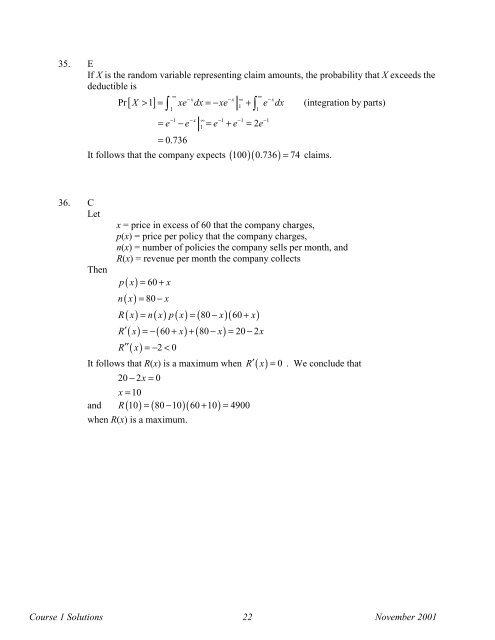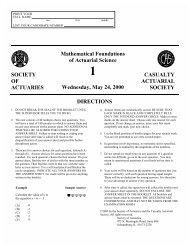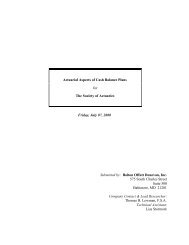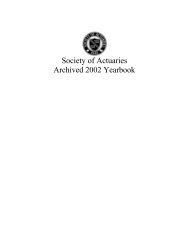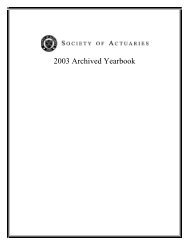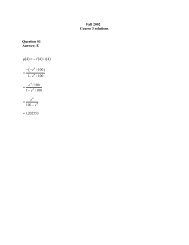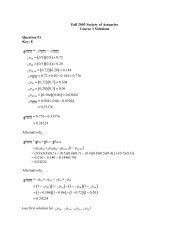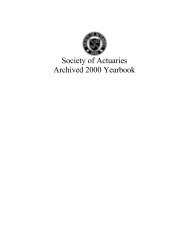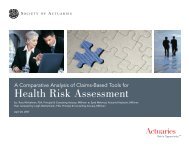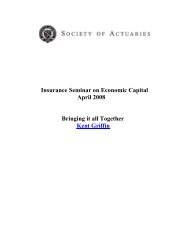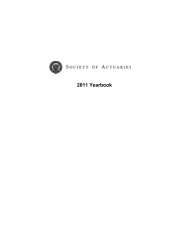November 2001 - Course 1 SOA Solutions
November 2001 - Course 1 SOA Solutions
November 2001 - Course 1 SOA Solutions
Create successful ePaper yourself
Turn your PDF publications into a flip-book with our unique Google optimized e-Paper software.
35. E<br />
If X is the random variable representing claim amounts, the probability that X exceeds the<br />
deductible is<br />
∞<br />
[ ] ∫<br />
1<br />
−x −x ∞ −x<br />
Pr X > 1 = xe dx=− xe + e dx (integration by parts)<br />
1 1<br />
−1 −x<br />
∞ −1 −1 −1<br />
1<br />
2<br />
= e − e = e + e = e<br />
= 0.736<br />
It follows that the company expects ( 100)( 0.736)<br />
= 74 claims.<br />
∫<br />
∞<br />
36. C<br />
Let<br />
Then<br />
x = price in excess of 60 that the company charges,<br />
p(x) = price per policy that the company charges,<br />
n(x) = number of policies the company sells per month, and<br />
R(x) = revenue per month the company collects<br />
( ) = 60 + x<br />
( ) = 80 −x<br />
( ) = ( ) ( ) = ( 80 − )( 60 + )<br />
′( ) =− ( 60 + ) + ( 80 − ) = 20 −2<br />
′′( x)<br />
=− 2<<br />
0<br />
p x<br />
n x<br />
R x n x p x x x<br />
R x x x x<br />
R<br />
It follows that R(x) is a maximum when R ( x) 0<br />
20 − 2x<br />
= 0<br />
x = 10<br />
R 10 = 80 − 10 60 + 10 = 4900<br />
and ( ) ( )( )<br />
when R(x) is a maximum.<br />
′ = . We conclude that<br />
<strong>Course</strong> 1 <strong>Solutions</strong> 22 <strong>November</strong> <strong>2001</strong>


